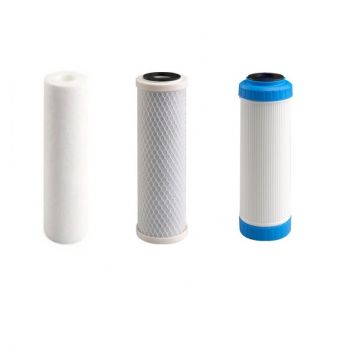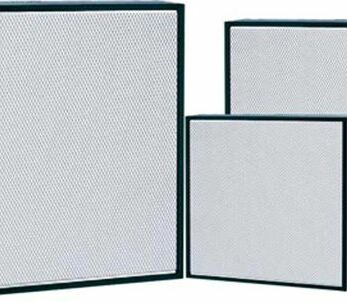HEPA H13 Filter and HEPA H14 Filter Comparison
The HEPA filter membrane is a breakthrough technology that provides effective solutions for various industries, particularly those involving clean rooms.
A HEPA filter membrane is a high-performance air and dust filtration device, guaranteed to meet the EN 1822 standard, ranging from H10 to H17. Among these, the most commonly used filters today are HEPA H13 and HEPA H14. So, what is the difference between these two types? Let’s explore more about them with VCR in the article below!
The Similarity Between HEPA H13 and HEPA H14 Filter Membrane
Regarding the structure
- Frame: Typically made from materials such as aluminum, galvanized iron (GI), or stainless steel, the frame gives the filter its shape and helps protect the inner components of the filter membrane.
- Membrane: The membrane is made from fiberglass, arranged in a random mesh pattern, with a diameter ranging from 0.5 to 2.0 micrometers. This structure enables HEPA filters to capture a large number of very small particles, such as pollen, mold spores, pet dander, and smoke, which can cause respiratory issues and allergies - particles that ordinary vacuum cleaners cannot filter out.

About the Application
The Difference Between HEPA H13 Filter Membrane and HEPA H14
Dust Filtration Efficiency of HEPA H13 and HEPA H14 Filter Membranes
| Filter classification | Total value | Local value | ||
| Performance (%) | Penetrating particles(%) | Performance (%) | Penetrating particles(%) | |
| H13 | ≥99,95 | ≤0,05 | ≥99,75 | ≤0,25 |
| H14 | ≥99,995 | ≤0,005 | ≥99,975≤ | ≤0,025 |

Standard Size and Airflow of HEPA H13 and HEPA H14 Filters
Common standard size of HEPA H13 filter membrane
| Size | Air flow | Head pressure difference | Replacement pressure difference |
| 305 x 305 x 69 (mm) |
250 (M3/H)
|
150 Pa | 600 Pa |
| 610 x 610 x 69 (mm) | 1000 (М3/Н) | ||
| 915 x 610 x 69 (mm) | 1500 (M3/H) | ||
| 305 x 305 x 150(mm) | 450 (M3/H) | 250 Pa | |
| 305 x 610 x 150 (mm) | 850 (M3/H) | ||
| 610 x 610 x 150 (mm) | 1700 (M3/Н) | ||
| 305 x 610 x 292 (mm) | 1700 (M3/H) | ||
| 610 x 610 x 292 (mm) | 3400 (M3/H) | ||
| 610 x 762 x 292 (mm) | 3600 (М3/H) |
Common standard size of HEPA H14 filter membrane
| Size | Air flow | Head pressure difference | Replacement pressure difference |
| 305 x 305 x 69 (mm) | 250 (M3/H) | 150 Pa | 600 Pa |
| 610 x 610 x 69 (mm) | 1000 (М3/Н) | ||
| 915 x 610 x 69 (mm) | 1500 (M3/H) | ||
| 610 x 610 x 292 (mm) | 3400 (M3/H) | ||
| 610 x 762 x 292 (mm) | 3600 (М3/H) |



















